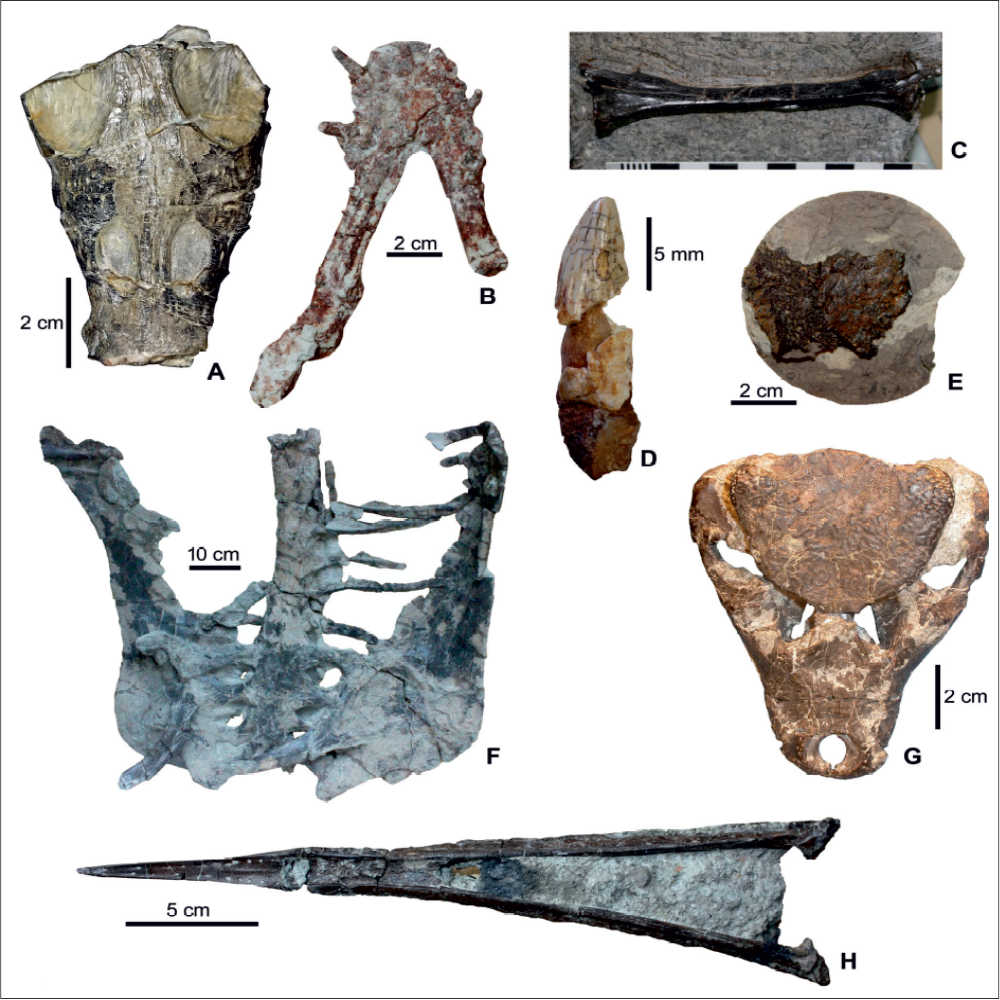Vertebrate fossils and associated research in the Carpathian Basin
Abstract
The richest vertebrate sites in the Carpathian Basin are mainly Neogene and Pleistocene, but there are also some Mesozoic localities that have been researched for decades and are of great international interest. The highly sporadic Paleozoic finds are mostly based on microfossils (conodonts) and some Carboniferous-Perm footprints, the former being biostratigraphically and the latter paleobiogeographically important. In addition to some significant scattered finds (Placochelys placodonta) from the Triassic period, old and new localities in Bihar and Villány provided diverse, predominantly marine vertebrate faunas that significantly added to our knowledge on shelf faunas of the southern Eurasian margin.
Our Jurassic vertebrate record is composed of mainly isolated finds (e.g. the Magyarosuchus marine crocodile) or tracksites (Komlosaurus). The oldest fauna of the Cretaceous period is the archosaurian assemblage trapped in the Berriasian aged bauxite of Bihar, followed in time by recently discovered fish and reptile bones and teeth from the Albian Alsópere Bauxite. The Santonian aged Iharkút and Ajka vertebrate sites, discovered 20 years ago, provided a unique and diverse assemblage that fills a significant gap in the Late Cretaceous European record. The Maastrichtian Transylvanian localities, discovered 125 years ago, provided a highly unique island fauna including huge pterosaurs, dwarf sauropods and dome-headed multituberculate mammals. These Late Cretaceous assemblages are now among the dominant continental vertebrate records worldwide, providing a great insight into the insular faunal evolution of the European archipelago.
From the Hungarian Paleogene mainly sporadic fossil sites with aquatic vertebrates were discovered and only few of them yielded richer, terrestrial faunas (e.g. Máriahalom, Bodajk).
The 17-million-year-old Ipolytarnóc footprints, conserved by a volcanic eruption, are the best known of the Lower Miocene fossils. The famous giant petrified pine trunk and a rich shark tooth assemblage have also been preserved in this site. Many remains of Badenian, Sarmatian and later (Pannonian) sea cows, seals and cetaceans were collected from the Mecsek sand layers (eg. Danitzpuszta sand mine). Several significant sites from the terrestrial Middle Miocene have been excavated in the last three decades (Sámsonháza, Mátraszőlős, Hasznos, Tasád/Tăşad), their small mammal faunas were preserved by swamps and lacustrine accumulations. They are indicators of a warm and humid subtropical climate.
The fossil ape Rudapithecus hungaricus, which is the best known palaeontological finding of Hungary, is an element of the rich late Miocene (10 million years old) subtropical ecosystem of Rudabánya. A similar fossil community was discovered in the covering layer of a gypsum mine in Alsótelekes. Gyepüfüzes (Kohfidisch), Götzendorf, Sümeg, Csákvár, Bérbaltavár, Tardosbánya, Polgárdi and other rich sites reflect on the environmental transformation during the Pannonian Age when the rich, subtropical forests disappeared and were replaced by wooded and then grassy savannas and finally sporadic desert areas. The alginate layers of Pula locality were deposited in a Pliocene volcanic crater lake. They yielded many, well-preserved leaf and arthropod fossils, fish, and mammalian remains. The findings from Ajnácskő(Hajnáčka) were preserved by a volcanic eruption, while the fauna of Ivánháza was discovered in the sediments of karst fissures. The karst fillings of Csarnóta, Beremend and Ostramos show the faunal changes of the end of Pliocene and the beginning of Lower Pleistocene. Exceptionally rich Quaternary assemblages were yielded by Gombaszög (Gombasek) in the Hungarian Highlands and from Betfia in Transylvania. More than 100 localities were described from the Pleistocene of Hungary and at least 150 different faunas were found in them. Most of them are from fillings of karst cavities, but there are also fluviatile and aeolian sediments. Many findings of ancient humans have also been found in several localities (e.g. Vértesszőlős: Homo hedelbergensis, Subalyuk: Homo sapiens neanderthalensis, Istállóskő: Homo sapiens sapiens). Detailed multidisciplinary investigations have been carried out in some of these faunas (e.g. Somssich Hill, Süttő, Tokod, Vaskapu Cave) by research groups of different specialists recently. Macro- and microfaunas of these sites appropriately reflect on Quaternary climatic changes.
















